中巴经济走廊:现状、挑战及对策建议——《下一个黄金时代》摘选

![]()
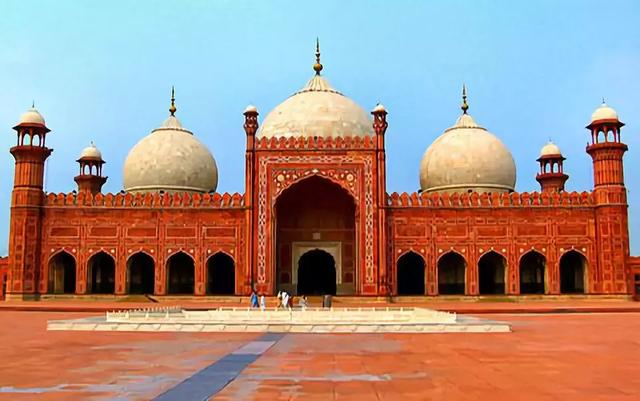

导读
中国-巴基斯坦经济走廊(China-Pakistan Economic Corridor, CPEC),简称中巴经济走廊,是中国和巴基斯坦两国旨在深入加强互联互通和共同发展而开展的一系列大型工程计划。本文将对其现状进行归纳,就该计划即存和未来可能出现的挑战与风险予以总结和评估,并给出初步的对策建议。
此前,首届“一带一路”国际合作高峰论坛于2017年5月14日-15日在北京召开。为了更好配合高峰论坛,体现智库的智力支持,盘古智库与中国青年出版社联袂推出《“一带一路”节点国家态度研究》丛书。盘古智库根据现有的研究资源选择八个节点国家:印度、土耳其、韩国、印尼、巴基斯坦、意大利、英国、白俄罗斯,组织力量跟踪这些国家对“一带一路”倡议的反应和态度,探析这些国家如此态度的原因,并给出推动其更好参与“一带一路”建设的对策建议。如很多作者不约而同地都提及:要加强“一带一路”的宣传力度。
本文系盘古智库印度研究中心副主任、高级研究员李玲飞 对巴基斯坦在一带一路中的作用研究,摘选自《下一个黄金时代》( 本书由盘古智库“一带一路”节点国家态度研究课题组集体撰写,课题组组长为盘古智库理事长易鹏以及盘古智库特约高级策略研究员、中国青年出版社社长皮钧) 。

广告
一带一路节点国家态度研究:下一个黄金时代(汉英对照)作者:易鹏 皮钧 主编 ,李玲飞 熊榆 副主编
当当
中国-巴基斯坦经济走廊(China-Pakistan Economic Corridor, CPEC),简称中巴经济走廊,是中国和巴基斯坦两国旨在深入加强互联互通和共同发展而开展的一系列大型工程计划。中巴经济走廊北起中国新疆喀什,南至巴基斯坦俾路支省瓜达尔港,成为连接“丝绸之路经济带”与“海上丝绸之路”的枢纽,因此在“一带一路”战略部署与推进中具有非同一般的意义。目前(2017年5月),中巴经济走廊建设已经取得多项重要进展,中巴两国政府也已展开多轮磋商,着手制定“中巴经济走廊远景规划”。值此之际,本文将对中巴经济走廊建设的现状进行归纳,就该计划即存和未来可能出现的挑战与风险予以总结和评估,并给出初步的对策建议。
一、中巴经济走廊的建设背景与现状
多年以来,中国与巴基斯坦的经济贸易合作,在两国之间传统友谊和共同利益基础之上得以持续稳定发展。进入二十一世纪之后,两国先后签署自由贸易协定(2006年)和《中巴自贸区服务贸易协定》(2009年),经贸合作有了更深层次的进展。《中巴自贸区服务贸易协定》签署当年,中国成为巴基斯坦第二大贸易伙伴。
在此背景下,2013年5月,李克强总理在出访巴基斯坦期间,提出了积极探索和制定中巴经济走廊远景规划的倡议。同年7月,巴基斯坦总理谢里夫访华。两国同意成立中国和巴基斯坦经济走廊远景规划联合合作委员会,并达成了一系列在远景规划合作框架下的早期收获项目。2014年2月,巴基斯坦总统马姆努恩·侯赛因对中国进行国事访问时,中巴经济走廊远景规划联合合作委员会已经启动,综合规划、交通基础设施和能源联合工作组已经成功举行首轮会议。
2015年4月,习近平主席对巴基斯坦进行国事访问时,两国同意将中巴关系提升为“全天候战略合作伙伴关系”,将中巴经济走廊提升为“一带一路”的旗舰工程。中巴经济走廊建设的规划是以走廊建设为中心,以港口、能源、基础设施建设和产业合作为重点,形成“1+4”合作布局。目前,这些项目的发展状况是:
1. 瓜达尔港
如果说中巴经济走廊是“一带一路”的旗舰工程,那么瓜达尔港就是中巴经济走廊的“明珠项目”。2013年2月,中国海外港口控股有限公司(China Overseas Port Holding Company,以下简称“中国港控”)从新加坡港务集团正式接手瓜达尔港的运营权。到2016年6月底,瓜达尔港已具备基本作业能力,同年11月13日,中巴经济走廊车队顺利从喀什抵达瓜达尔,通过港口大规模出口集装箱,首次联运成功。
与瓜达尔港一并移交给中国公司的还有总面积达923公顷的自由区,中方将首先开发其中紧邻瓜达尔港区的25公顷土地,这也被称为自由区的起步区。2016年9月,起步区的开发建设工作正式展开,目前已经完成了约一半的工作量。起步区内的道路、水电供应、绿化等全部基础设施将在2017年底之前完成,其中包括一个集企业办公、政务服务、商务考察、休闲等功能于一身的一站式商务服务中心。
截至目前,至少有35家企业申请自由区营业执照,拿到营业执照的企业有9家,预计投资额超过600亿元人民币。按照规划,瓜达尔自由区分为南部商贸物流区和北部加工制造区。南部依托现有码头,重点发展仓储、物流、商品展销等产业;北部为加工制造区,重点发展汽车制造及组装、家电、纺织、清真食品、医疗器械,形成具有完整产业链条的规模化产业集群。沿海岸发展旅游休闲、餐饮、水上运动以及配套生活设施。
中国港控还在瓜达尔港安装了日生产能力为500吨淡水的海水淡化设施,并在港口内部埋设了全套的供水和排水系统。这些淡水不仅能满足港口内施工和生活的基本用水,还可以每月定量向附近居民免费分发淡水。瓜达尔港的“早期收获”项目还包括:
项目名称
预计投资额度
状态
1.
东湾高速公路建设
1亿4千万美元
预计2018年建成
2.
防波提建设
1亿3千万美元
建设中
3.
中巴职业技术学校
9 百万美元
已建成
4.
自由区及出口加工区基础设施建设
3千5百万美元
建设中
5.
海水处理及淡水供应设施建设
1亿1千4百万美元
预计2018年建成
6.
中巴友谊医院(升级现有的医院)
1亿美元
建设中
7.
燃煤电厂
3亿6千万美元
建设中
8.
瓜达尔国际机场
2亿3千万美元
运营中
9.
瓜达尔港泊位通道疏浚
2千7百万美元
建设中
2. 能源
为解决巴基斯坦能源短缺问题,从提出倡议以来的近四年间,中巴经济走廊早期收获项目主要集中在能源领域,包括卡西姆港燃煤发电站、萨希瓦燃煤发电站、胡布燃煤发电站、Suki Kinari水电站、卡洛特(Karot)水电站、旁遮普省的Quaid-e-Azam太阳能发电站以及位于信德省内的四个风电项目等将在2017年内陆续投产。
卡西姆港燃煤电站项目由中国电建海外投资公司和卡塔尔Al-Mirqad Capital共同投资20.85亿美元建设,总装机容量为1320兆瓦,并配备海水淡化、废水处理、噪声控制、脱硫除尘等一系列环保设施。
中国的丝路基金将第一笔16.5亿美元的投资投在了中巴经济走廊的卡洛特水电站项目上,该项目作为中巴经济走廊优先实施的能源项目之一,采取了政府与社会资本合作(PPP)方式融资,2016年初由三峡集团开工建设。卡洛特水电站计划2020年投入运营,运营期30年,到期后无偿转让给巴基斯坦政府。
3. 交通基础设施
按照中国驻巴基斯坦大使孙卫东的总结,走廊最具代表性的三大项目,除了瓜达尔自由区的起步区,就是白沙瓦至卡拉奇高速公路的木尔坦至苏库尔段以及喀喇昆仑公路升级改造二期工程。这两个大型工程的项目总额将超过60亿美元。在交通基础设施领域,2016年开工的还有瓜达尔国际机场和瓜达尔东湾高速公路两个项目,投资规模较小,约4亿美元。
2016年11月13日,中巴经济走廊联合贸易车队首次试联通活动在巴基斯坦俾路支省瓜达尔港隆重举行。车队活动的结果表明,中巴经济走廊的道路已经实现初步联通,“一走廊、多通道”理念正逐步成为现实。巴基斯坦总理谢里夫则表示,这“标志着中巴经济走廊正从概念成为现实,掀开了本地区互联互通新的一页。巴基斯坦由此成为亚洲大陆的交汇点,各国人民将共享发展繁荣”。
中巴经济走廊特使扎法尔介绍说,由于巴基斯坦国内的能源短缺问题尚未解决,因此巴国内1号铁路干线的升级改造项目(将其时速从现在的60公里提升至140公里)、哈维连陆港的建设以及中巴产业园区的合作都还停留在规划和可行性研究层面,尚未开展施工。
4. 产业合作
中巴产业合作仍处在起步阶段。在工业园区建设方面,旁遮普、信德、开伯尔-普赫图赫瓦、俾路支省四省总共提出了建设29个产业园区的规划,另有21个矿业加工园区。目前,受制于巴基斯坦国内的经济基础、能源供应以及人力资源等现实情况,这些项目还无法同时上马,最终中方从地区平衡的角度出发在每个省选了一个产业园,作为示范园区。具体的产业合作见如下项目:
项目名称
公司名称
阶段
进展
瓜达尔至纳瓦沙阿液化天然气终端与管线项目(700 公里)
中国石油天然气管道局
即将开通
40%
海尔-鲁巴经济区 (二期)
海尔电器有限公司
可行性阶段
15%
拉瓦尔品第至红其拉甫光线电缆工程
华为技术有限公司
建设中
50%
DTMB 示范项目
待定
已签署合作备忘录
5%
拉合尔橙线地铁项目
中铁-中国兵工集团
建设中
60%
加速巴基斯坦TD-LTE商业化项目
待定
可行性阶段
15%
二、中巴经济走廊面临的挑战与主要问题
中巴经济走廊建设面临的主要挑战来自三个方面:国内政治和经济局势带来的投资风险;复杂地缘政治博弈带来的国际关系风险;极端主义和恐怖主义带来的安全风险。
1. 巴基斯坦国内政治经济风险
巴基斯坦国内整体政治和经济环境比较稳定,而且源于中巴之间传统友谊和战略伙伴关系,中巴经济走廊在巴基斯坦国内政府层面,得到了普遍的支持。国内政治经济形势带来的主要风险在于,政党政治中的权力争夺和背后所反映出来的不同群体之间的利益矛盾,以及薄弱的经济基础和发展环境带来的投资风险。
(1)国内政治的不稳定因素:党派之争背后的地区主义与社会矛盾。
巴基斯坦有200多个政党,派系众多。中巴经济走廊项目的规划,常常引发巴议会间各党派的争执。而这种党派之争反映出的是更深层次矛盾,是背后的各个地区、族群间的利益之争。比如位于巴基斯坦东部的旁遮普省和信德省是经济较为发达的两个省份,西部的开伯尔-普赫图赫瓦省和俾路支省较为落后,急需大量基础设施建设的投入。各个省都希望来自中巴经济走廊的更多项目落户自家门口,由此出现了“东线”和“西线”之争。而且信德省是巴基斯坦最大政党人民党的大本营,与执政的穆斯林联盟(谢里夫派)旁遮普省历来不和,这种地区主义的夺利与各大党派的争权互相交织,执政的穆斯林联盟(谢里夫派)逐个说服普什图人民党、正义运动党、俾路支省的人民民族党等主要反对党,才达成一个折衷方案,项目得以最后规划和落实执行。
2016年7月底,参议院的数名议员联名要求谢里夫政府向民众公开中巴经济走廊项目的有关内容,附议的不仅有来自反对党的议员,也有来自执政联盟中的其他政党议员,这些议员指摘穆斯林联盟(谢里夫派)的执政根基所在地旁遮普省成为中巴经济走廊的最大受益者,而其他各省几乎什么也没有得到。2017年2月以来,俾路支省民族党领导人门加尔(Sardar Akhtar Mengal)在俾路支省首府奎达组织集会反对中巴经济走廊,还对媒体称中国的投资项目“没有给俾路支省带来任何发展”,却“给旁遮普人创造了大量的就业机会”。
针对中巴经济走廊的权益争夺,还包括地方与联邦政府之争。中巴经济走廊能源领域的旗舰项目——卡西姆燃煤电站,由中国电建海外投资公司和卡塔尔Al-Mirqad Capital共同投资20亿美元建成,是谢里夫政府为解决国内电力紧张的里程碑工程,但其土地使用权却一度陷入地方与联邦政府之争。
发电站是巴基斯坦联邦政府批准的“中巴经济走廊”项目,但其所在的信德省认为联邦政府没有得到信德省的授权使用这块土地,信德省要求得到发电战的部分股权,或者得到与土地使用权同等的补偿。联邦政府认为根据该国宪法,联邦政府已经得到了该块土地的租用权,有权进行任何目的的开发和使用,但信德省则认为联邦政府仅有权将土地用于港口建设和海运,并无权建设发电站。
卡西姆港发电站的土地问题,最后通过中国政府与巴联邦政府、信德省政府以及卡西姆港发电公司等多个相关职能部门的协调努力,经过艰难的磋商和谈判,一直到2016年12月底,才得以解决。
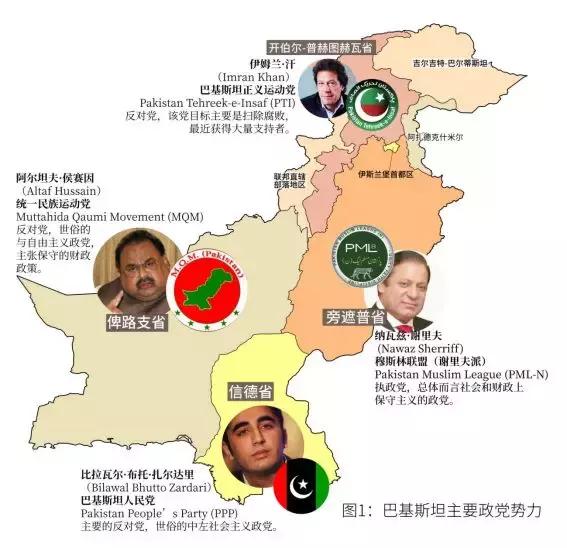
巴基斯坦国内的政治争端,给经济走廊项目规划与施工带来很大阻力,从选址到工期,都受到直接影响。而投入后的运营过程中,潜在的不确定性风险也不能低估。
此外,巴军方与民选政府之间缺乏基本信任,对巴政局长期稳定也会造成不利影响。在巴建国近70年的历史中,先后出现四次军人执政,累计长达33年。尽管2008年以后,军人对政治的干涉与影响逐渐消减,但很长一段时间内,军人干政的可能性以及由此影响经济走廊的建设的可能性并不能完全排除。
(2)经济风险
巴基斯坦经济基础薄弱、基础设施落后、电力淡水等资源匮乏、经济政策制定缓慢和混乱,是中巴经济走廊建设面临的现实。中方在中巴经济走廊中前期主要项目,以能源与交通等基础设施为主,以缓解能源供应不足、交通和基础设施落后造成的困难。这样的环境带来的风险主要是投资成本增加和效率低下。
以油气管线项目为例,中国海路油气运输全程基础设施已经大体齐全,但想象中的“中巴油气管线”相应基础设施则需要白手起家从头建设,东道国巴基斯坦目前就连稳定的电力供给也不能保证,尚待中巴经济走廊框架下的一系列发电项目为他们化解这一难题,何况从瓜达尔到喀什需要翻越海拔五六千米的喀喇昆仑山口,这条想象中的管道需要建设功率超大的泵站,还需要为高原地区的管道提供额外的加热、保温设施,耗费的投资就更高了。因此,即使不考虑由此而增加的安保成本,“中巴油气管线”构想也注定是不经济的。
此外,在巴国内,经济问题政治化倾向严重。例如在融资方面,很多巴方人士将中巴经济走廊理解为中国为国内过剩资金和产能寻找出口途径,因此,中巴经济走廊应主要为中国投资,巴方并不需要扩大融资渠道。得到亚投行和亚洲开发银行共同投资的巴基斯坦首个高速公路项目——M4高速公路(绍尔果德至哈内瓦尔段)也没有被巴基斯坦计划经济部列为中巴经济走廊的项目。
世界银行2016年4月发布的《南亚经济聚焦》认为,中巴经济走廊如果顺利实施,将给巴基斯坦带来彻底的改变,但是“如今该计划面临着巴国内政治经济风险”。考虑到巴基斯坦国内的政治与经济情况,世界银行的判断不能不说是一个非常现实和紧迫的预警。
2. 地缘政治的复杂性
地缘政治方面,中巴经济走廊需要面对处理的,既有巴基斯坦与印度、阿富汗、中东等周边国家关系的因素,也有域外大国地区博弈的影响。
首先,巴印关系短期内难有实质性改善。2015年12月印度总理莫迪突访巴基斯坦后,舆论均预期两国关系将有所改善,然而巴印关系却在2016年急转之下。2016年9月18日,印控克什米尔地区的陆军军营乌力基地遭到恐怖主义袭击,18名印度士兵死亡。印度指责巴基斯坦是恐袭背后的支持者,并于9月29日对巴进行“外科手术式打击”。外交上,印度还发起了“孤立”巴基斯坦的行动,主要是不参加在巴基斯坦举行的第19届南盟峰会。随后孟加拉、不丹、阿富汗相继作出类似表态。
其次,巴阿关系受制于杜兰线问题、塔利班问题以及阿富汗对巴基斯坦在恐怖主义问题上的失望,因此暂时也难以彻底缓和。随着2014年12月31日北约宣布正式结束在阿战斗任务,美国从阿富汗撤军,阿国内局势动荡,由此产生的不确定性和安全风险对巴国内安全和社会稳定均构成严重挑战。
此外,巴基斯坦与中东国家,特别是沙特和伊朗的关系微妙。虽然目前巴基斯坦的中东政策取得一定成效,但在中巴经济走廊问题上,地缘经济将取代地缘政治成为影响走廊建设的主要风险因素。有学者指出,印度为伊朗设计的恰巴哈尔港(Chabahar)和巴基斯坦的瓜达尔港已成为两国在全球争夺资源和影响力的较量的缩影。
从域外大国在该地区的地缘政治格局来看,南亚地区越来越形成“选边站队”的“冷战”格局。首先,印美关系进一步发展,以至于印度在防务上发展为美国的“准盟友”。其次,俄罗斯与巴基斯坦开始“靠近”。就在印度发动“孤立”巴基斯坦行动时,俄与巴在9月24日举行双方首次联合军演“友谊2016”,显示了微妙的地缘政治内涵。
最复杂的问题是,在中巴经济走廊中,中国如何处理与印度的关系。我们看到,从始至今,印度对中巴经济走廊一直采取抵触、不合作甚至排斥的态度。印度不希望中国主导地区事务,已经利用且将来必然还会利用印巴之间的领土争议等话题从中阻挠,并且还会利用自身影响力拉拢其他国家提出其它倡议或项目形成竞争。印度的这种不合作态度与竞争角色也很容易被其他大国利用,形成对中国非常不利的博弈局面。
3. 极端势力和恐怖主义带来的安全风险
(1)俾路支省安全形势严峻
瓜达尔港对于中国来说,不仅是一条能源战略通道。它位于中国提出的“路带”和“海丝”的正中央,亦是中巴经济走廊的咽喉和枢纽,却处在巴基斯坦最不安宁的俾路支省腹地。首先是在巴的中方施工人员的人身安全。与2007-2009年间几乎每三天发生一起恐怖袭击的局面相比,巴基斯坦的总体安全状况已经有了明显提升,但是对于主要项目所在地——俾路支省的中资机构和中方工程人员来说,需要时刻提防诸如“信德革命军”、“俾路支解放军”等武装组织的袭击。
随着中方大批工程人员的到场,瓜达尔地区的安保也要升级。2004年5月中国工程师在瓜达尔市区内遇袭的悲剧依然是前来瓜达尔的中国人挥之不去的阴影。俾路支省分离主义势力频繁发动的针对巴政府项目的袭击也让中国投资者心有余悸。为此,在中国政府要求下,巴基斯坦军方划拨了1.5万兵力专门为中巴经济走廊项目保驾护航,其中瓜达尔港的建设和开发是护卫重点。但这种“严阵以待”的方式在投资者看来并不是能增加投资信心的加分项。这些持枪的安保力量随时出现在身边,初来乍到不熟悉情况的投资者会感到非常不适,会影响他们的投资决定。
巴基斯坦提供的安全保卫还存在着机制性的隐患。目前为走廊项目提供安保的武装力量主要由三方面构成:地方警察、武装民兵以及巴基斯坦三军武装力量。三者间严重缺乏协同调度。
(2)极端组织“伊斯兰国”加紧渗透、暴恐势力回流
近年来,极端组织“伊斯兰国”加紧了对巴阿地区的渗透。目前,在巴基斯坦拉合尔和卡拉奇等大城市均出现了极端组织发动的小规模暴恐袭击事件。而极端组织在旁遮普省有在受过良好教育的城市青年群体中扩散的趋势,未来旁遮普省也可能会因此面临严峻的安全挑战。
2017年2月,巴基斯坦恐怖势力在四天时间连续制造六起恐袭事件,大有卷土重来之势。2月13日,在旁遮普省会城市拉合尔,14日在俾路支省首府奎塔,15日在开普省首府白沙瓦,同日在联邦部落区,16日在信德省一著名苏菲派清真寺,恐怖份子向国家执法部门发起攻击。“自由者党”宣称对此负责,显示其打击目标是国家机构人员和世俗媒体从业者。
此外,近期巴基斯坦旁遮普政府发出涉恐警报,称巴参加伊拉克和叙利亚战争的极端分子正在返回巴基斯坦,为伊斯兰国在这里的活动增添力量。哪怕民选政府和军队有再好的合作,“国家(反恐)行动计划”也无望应对这一威胁。解决国内恐怖主义问题的前提是,首先要解决滋养这些恐怖分子的外部环境问题。不幸的是,在与印度和阿富汗是要战争还是要和平的问题上,尚无新思维出现的迹象。
自从巴基斯坦加入到美国在阿富汗的反恐战争之后,国内安全形势的最大病灶转移到了与阿富汗边境相邻的部落区,其中又以北瓦济里斯坦(以下简称“北瓦”)最为顽固。巴军方先后于2009年和2014年在南瓦济里斯坦地区和北瓦发动了“拯救之路”和“利剑行动”的反恐军事行动,部分巴塔成员遭受打击后逃往阿富汗东部地区。由于巴阿边境缺乏有效管控,两国人员可以在部分地区自由往来,因此一旦巴基斯坦反恐形势趋缓,暴恐分子有回流的可能。
三、对策建议
1. 正确认识、充足准备
首先,理性看待中巴经济走廊建设中出现的问题。如上文所示,巴基斯坦缺水少电的现状短期内无法改变;恐怖主义和极端主义无法快速彻底根除,是走廊项目回避不了的客观现实;巴基斯坦国内的政治斗争也是其长期以来结构性矛盾所致,与走廊建设本身无关;中巴经济走廊以交通为基础,而中巴之间的交通不可避免地经过巴控克什米尔地区,同样是地理事实,不存在中国故意为难有关国家的情况;世界上几大国势力在南亚角逐所引发的地缘政治危机,也不以中国的良好意愿为转移。所以,中巴经济走廊建设所面临的种种问题,都具有长期性、全局性、顽固性的特点,需以理性客观的心态去看待和处理。
其次,充实联委会机制,加强规划调研。我国应充分利用中巴之间的“全天候战略伙伴关系”和高度的政治互信,加强高层在协调管理方面的沟通作用,充实现有的联委会机制。与此同时,加大对重点领域和具体项目的前期调研工作,配合走廊和我国区域发展的总体规划,有步骤地落实推进。
再次,充分认识中巴经济走廊的风险,做好应急预案。在对巴基斯坦军方、执法机构和安保人员给予充分信任与合作的基础上,也要对巴安全环境的复杂性保持清醒认识,对可能出现的各种风险和变故作出应急预案准备。
2. 坚持透明化和市场运作
首先,增加中巴经济走廊规划的透明度,加强在巴的外宣工作。既要调动巴主流媒体,也要借鉴新媒体,运用各种手段加强两国人民之间的民心交流,针对各种误解,达成增信释疑的作用。这一点可以学习日本。一个项目完成之后,当地百姓记住的是日本人怎样辛勤的工作及为他们带来的实实在在的好处。而中国人的特点是做了好事,却不善于大力传播。透明化的另一作用是增加地区互信,消除地缘政治角度的猜忌,避免出现恶性竞争和博弈。中巴经济走廊规划以及中国在巴基斯坦展开的一系列合作项目建设,实际上将为整个地区的经济、贸易发展提供合作共赢的平台,是一个分享发展红利、改善整个地区经济、政治与安全的机遇。而要使其他国家相信中国建立“命运共同体”的良好愿望并积极参与其中的办法之一,是通过中巴经济走廊这一旗舰项目在透明化的运作基础上,发挥示范效应,将中国的战略思路公开展示于世界面前。
其次,坚持市场化运作,避免经济问题政治化。虽然巴基斯坦号称我国的“巴铁”,但在项目实施过程中,还是要以市场化手段配置资源,遵守国际法及通用准则,发挥各类企业的主体作用。政府要做的是搭桥铺路等辅助性功能,尽量让“看不见的手”发挥作用,避免经济问题上纲上线,造成政治或外交纠纷。
3. 加强民间与基层交流、建立全方位的友好关系
巴基斯坦内部政治关系的复杂性,决定了在开展中巴经济走廊这样地理和时间跨度如此之大的项目时,仅仅通过与中央政府和主要党派搞好关系不能一劳永逸地解决投资环境问题。在发展与其国内主要政治派别、族群和利益集团友好关系时,应当坚持从基层入手,争取民间对投资项目和工程建设的最广泛的支持。同时,由于中巴经济走廊而出现的大规模海外投资和人员输出,也使得领事保护工作捉襟见肘,通过与基层民众建立友好关系并由此改善投资环境,有益于降低当地资产与人员的安全风险。
具体方法可以在中巴经济走廊重点项目所在区以及与我国内陆联系密切的地区开展社会公益事业,为当地百姓在民生(饮用水、发电厂等)、医疗、教育等方面提供常态化的公共服务和社会福利,这样不仅能够增进与当地民众的友好关系从而得以建立优良的投资环境,也能通过基层的互动,发现与创造更多的投资机会,甚至可以由此解决巴基斯坦内部地区主义所导致的争端问题。
以瓜达尔港建设为例,在项目建设过程中出现的一个主要族群和地区矛盾是工程承包商和参与建设工人之间的矛盾,建设工人主要以旁遮普省人为主,当地(俾路支省)人很难分得一杯羹。而由于巴基斯坦国内政治、经济形势限制,这种矛盾短时期内很难得以协商解决,那么我们是否可以通过其他的公益性项目或小型的基础设施建设,在当地社区开展一些福利工程,一方面既不影响正常的港口施工建设,另一方面又可以为当地民众提供就业机会,既可以缓解地区主义带来的族群矛盾冲突,又能达到增进友好关系、改善投资环境的目的。
4. 加强民间与基层交流、确保海外人员和财产安全
中巴经济走廊这样大的项目规划需要投入大量资金、人员并形成规模庞大的海外资产,而巴基斯坦又是恐怖势力活动频繁的高危险区,这就要求我们必须尽全力保障海外人员的人身与财产安全。
首先,必须将该地区的反恐机制上升到国家战略高度,建立有针对性的、全面的安全防范、预警机制与应急管理机制。这就需要国家各有关部门,如外交部、国家安全委员会、国家反恐领导小组等相互协同与配合,建立完善的、跨部门的情报信息共享机制和应急反应机制。
其次,依靠与巴基斯坦及其他毗邻国家的反恐合作协调机制,提高情报共享、联合行动的能力,从而加大对该地区恐怖主义活动的打击力度。巴基斯坦及周边地区的反恐形势非常严峻,刚刚形成的中国、阿富汗、巴基斯坦和塔吉克斯坦四国军队反恐合作协调机制是中国成为地区国家反恐合作机制中主导力量走出的第一步。在目前,我们参与和主导的协作机制,仍然坚持互不干涉原则,仍是以人员的培训、技术与情报分享、协同训练和演习等方式为主导,但也应该做好准备,当中巴经济走廊乃至“一带一路”所产生的海外资产和海外利益越来越多时、当巴基斯坦等国无法通过一己之力解决危机时,应考虑对传统的不干涉原则做出修正,在当事方同意并保证其基本权利的前提下,实施直接干预和介入。

China- Pakistan Economic Corridor: Current Situation, challenges, Countermeasures and Suggestions
Dr. Lingfei Li, Deputy Director of the Center for Indian Studies & research fellow of the Pangoal Institution
China- Pakistan Economic Corridor (CPEC) is a series of big engineering project that China and Pakistan develops to enhance the connectivity and common development of the two countries. CPEC, with Kashghar (in Chinese Xin Jiang Province) and the port of Gwadar (in Pakistani Baluchistan Province) at its northern and southern ends respectively, is a hub of Silk Road Economic Belt and Maritime Silk Road. So it is extraordinarily significant for the strategic deployment and promotion of Belt and Road initiative. At the moment (May 2017), the construction of CPEC has made a number of important developments. The governments of China and Pakistan have also conducted rounds of consultations to set up “long-range planning of CPEC”. On this occasion, this article will conclude the current situation of the construction of CPEC, summarize and evaluate the challenges and risks that exist, and offer preliminary countermeasures and suggestions.
1
The Context and Current Situation of CPEC
For many years, based on traditional friendship and common interests of the two countries, the economic trade and cooperation between China and Pakistan develops sustainably and steadily. Entering the 21st century, China and Pakistan signed free trade agreements in 2006 and Agreement on Trade in Services of the Free Trade Agreement in 2009. And in the year when the latter agreement signed, China became the second biggest trade partner of Pakistan.
In this context, in May 2013, during Premier Li Keqiang’s visit to Pakistan, he proposed an initiative to actively explore and formulate “long-range planning of CPEC”. In July 2013, Pakistani Premier Sharif visited China. The two countries agreed to establish Pakistan-China Joint Cooperation Committee (JCC) and reached a series of early harvest projects in the framework of long-range planning and cooperation. During Pakistani President Mamnoon Hussain’s state visit to China in February 2014, Pakistan-China Joint Cooperation Committee (JCC) has already launched. Integrated planning joint working group, transport infrastructure and energy joint working group has successfully held the first round of the meeting.
In April 2015, during President Xi Jinping’s state visit to Pakistan, the two countries agreed to upgrade China-Pakistan relations to “all-weather strategic cooperative partnership” and enhance CPEC as the flagship project of One Belt and One Road initiative. The construction of CPEC is based on corridor construction, focusing on port, energy, infrastructure construction and industrial cooperation, forming a "1+4" cooperation layout. At the moment, the developments of these projects are as follows:
Port of Gwadar
If we say CPEC is the flagship project of Belt and Road Initiative, then the port of Gwadar is the “pearl project” of CPEC. In April 2013, China Overseas Port Holding Company officially took over the operational authority of Gwadar Port from PSA International Pte Ltd. By the end of June 2016, the port of Gwadar started to function with basic operational ability. On November 13th 2016, the convoy of CPEC arrived in Gwadar from Kashghar, after exporting containers massively through the port, the first time joint transportation operation was completed successfully.
The free zone, which is an area of 923 hectares, was handed over to Chinese company along with the port of Gwadar. China will firstly develop the land of 25 hectares, where near the port of Gwadar. This is also called the free zone's starting area. In September 2016, the development and construction of the starting area have been officially launched, and around half of the workload has been completed. All the infrastructure projects, such as roads, water & electricity supply and afforestation, will be completed by the end of 2017, including a one-stop business service center which integrates the function of office premises, governmental service, business inspection and entertainment etc.
Until now, at least 35 companies have applied for free zone business license, out of which 9 companies have got the license. It is estimated that the investment will exceed 60 billion RMB. According to the plan, Gwadar free zone will be divided into two parts: the southern part is business logistics zone and the northern one is processing zone. Relying on the existing wharf, the south focuses on warehousing, logistics, commodity exhibitions and other industries. The north, which is processing zone, focuses on the development of automotive manufacturing & assembly, home appliances, textiles, Muslim food and medical equipment, forming a large scale industrial cluster with a complete industrial chain. Along the coast the facilities related to tourism, catering service, entertainment, water sports, and life maintenance will be develope.
China Overseas Port Holding Company also installed a desalination facility with a daily production capacity of 500 tons of fresh water and laid a full set of water supply and drainage systems. The fresh water will not only meets the basic water need for construction and life in the port, but can also be distributed to the residents nearby every month. The early harvest projects of the Gwadar port also include:
project name
Estimated amount of investment
process
1
Construction of East Bay Highway
$140 million
will be completed in 2018
2
Breakwater construction
$130 million
in construction
3
Sino Pakistan vocational and technical school
$9 million
finished
4
Construction of infrastructure in free zones and export processing zones
$35 million
in construction
5
Construction of seawater treatment and freshwater supply facilities
$114 million
will be completed in 2018
6
Sino Pakistani Friendship Hospital (upgrade of existing hospital)
$100 million
in construction
7
coal-fired power plant
$360 million
in construction
8
Gwadar International Airport
$230 million
in operation
9
berth channel dredging of Gwadar Port
$270 million
in construction
Energy
In order to solve the energy shortage in Pakistan, in the four years since the proposal was put forward, the early harvest projects of CPEC mainly concentrate on energy sector, including Port Qasim coal-fired power plant, Sahiwal coal-fired power plant, Hub coal-fired power plant, Suki Kinari Hydropower Station, Karot Hydropower Station, Quaid-e-Azam solar power station in Punjab province and four wind power projects in Sindh province, all of which will be put into operation in 2017.
Port Qasim coal-fired power plant is jointly invested by PowerChina Resources Ltd. of Power Construction Corporation of China and Qatar Al-Mirqad Capital with 208.5 billion dollars. The total installed capacity is 1320 MW, and it is equipped with a series of environmental protection facilities, such as desalination, wastewater treatment, noise control, desulfurization and dust removal.
China's Silk Road Fund invested its first capital of 165 billion dollars on Karot Hydropower Project of CPEC. As one of the energy projects that have been giving priorities, it is financed by the cooperation of governmental and social capital. Its construction was started by the Three Gorges group in early 2016.
Transportation Infrastructure
According to the summary made by Sun Weidong, Chinese ambassador to Pakistan, the three most representative major projects, besides the starting area of Gwadar free zone, are Multan to Sukkur section of Peshawar to Karachi Expressway and the second phase of the project to upgrade an transform of the Karakoram Highway. The total investment of the two major projects will exceed $6 billion. In the field of transportation infrastructure, the construction of Gwadar International Airport and Gwadar East Bay Highway is started in 2016. The investment scale is smaller, which is about 400 million dollars.
In 13th November 2016, the first connection of CPEC joint trade motorcade was grandly held in the port of Gwadar in Pakistani Baluchistan Province. The result showed that the road has been preliminarily connected with China, and the concept of “one corridor and multi channels” has gradually become a reality. Pakistani Premier Sharif said that “ This marks CPEC is becoming a reality from the concept and opening a new page of interconnection in the region. Thus, Pakistan has become one of the traffic hinges of Asian continent, and the people from all countries can share this development and prosperity
The special envoy of CPEC Zafar Mahmood introduced that as domestic energy shortage in Pakistan has not been resolved, the upgrading and transformation of Pakistani domestic No. 1 railway trunk line (boosting its speed from 60 kilometers to 140 kilometers per hour), the construction of Port Harvey and the cooperation of Sino-Pakistan industrial park are still in planning and feasibility studying level, their constructions haven’t been started yet.
Industrial Cooperation
Sino-Pakistan industrial cooperation is still at its initial stage. As for the construction of industrial park, Punjab, Sindh, Khyber Pakhtunkhwa and Baluchistan have put forward the plan of constructing 29 industrial parks and 21 mining processing parks. At present, due to the backward reality of Pakistan's domestic economic foundation, energy supply and human resources, these projects are incapable to be launched at the same time. In the end, from the perspective of regional balance, China has chosen industrial park in each province as an exemplificative park. The following content in the table reflects specific industrial cooperation projects:
project name
company name
phase
process
Gwadar to Nava Shah LNG terminal and pipeline project (700 km)
China Petroleum Pipeline Bureau
will be opened
40%
Haier and Ruba Economic Zone(the second phase)
Haier Electric Appliance Co., Ltd.
Feasibility phase
15%
Rawalpindi to Khunjerab light cable engineering
Huawei Technologies CO., LTD
in construction
50%
DTMB demonstrative project
undetermined
memorandum of cooperation has been signed
5%
Lahore Orange Line subway project
China Railway Engineering-China North Industries Group Corporation
in construction
60%
the project of accelerating the commercialization of Pakistan TD-LTE
undetermined
Feasibility phase
15 %
2
Challenges in CPEC
Challenges faced by China-Pakistan Economic Corridor mainly generated from three aspects, which are investment risks in domestic economy & politics, risks on international relation in complicated geopolitics, security risks in extremism and terrorism.
Pakistan Domestic Economy and Politics Risks
Pakistan has a relatively stable economic and political environment. Due to China-Pakistan friendship and strategic partnership, China-Pakistan Economic Corridor has received general support from Pakistani government. Risks brought by domestic economic and political situations lie in power struggle in party politics, conflict of interest in various parties, and investment risks by weak economic infrastructure and environment.
(1) Unstable Elements in Domestic Politics: Regionalism and Social Tension in Party Struggles
There are more than 200 political parties in Pakistan with many factions. Layout of CPEC projects often causes disputes among parties. These disputes reflects a deeper problem, which is the conflict of interests over regions and ethnic groups. For example, Punjab and Sindh are the two relatively developed provinces in Eastern Pakistan. Khyber Pakhtunkhwa and Balochistan in the west are relatively poor developed and urgently need infrastructure investment. Provinces all wish to invite more CPEC projects to their own places, which causes tension between “East” and “West”. Sindh is also the base camp of Pakistan People’s Party, the biggest party in Pakistan which does not get along well with the governing party Pakistan Muslim League (Sharif faction) from Punjab. This regionalism and power struggle among parties require governing party Pakistan Muslim League (Sharif faction) to persuade major oppositions like National Awami Party、Pakistan Movement for Justice、Baluchistan National Awami Party, and reached a compromise, so that CPEC projects could be implemented.
At end of July, 2016 several senators in the senator jointly demanded the Sharif government to publish relevant materials in CPEC, seconded by senators from opposition parties, and other party senators from governing party league. These senators accuses Pakistan Muslim League (N) of favoring Punjab alone in CPEC. Since February 2017, the leader of Baluchistan National Party(Sardar Akhtar Mengal) has been organizing public gatherings in Quetta against CPEC, and claims to media that Chinese investment projects have brought no opportunities to Balochistan Province, but created a lot of jobs for Punjab.
Power struggle in CPEC also happens between federal and regional governments. The struggle over land-use right in Pakistan Port Qasim Power Project is an example.Port Qasim Power Project is Sharif government’s milestone project to solve domestic electricity shortage. This flagship project in energy field which was founded by the joint 2 billion investment from PowerChina Resources Ltd of Power Construction Corporation of China and Qatar Al-Mirqad Capital.
The power plant was a CPEC project approved by Pakistan Federal Government, but local Sindh government believed that federal government did not acquire authorization from local government to use the land. Sindh demanded partial share in the power plant, or compensations equivalent to the land useage . Federal government believed that according to Constitution, it has already acquired a land tenure and is entitled to any development and exploitation over the land. But Sindh believed that federal government has no right to build a power plant, the government only has right for port construction and maritime transport.
This problem was solved finally in the end of December, 2016, after hard discussions and negotiations among Chinese government, Pakistan federal government, Sindh regional government, Port Qasim Energy Holding, and many relevant parties.
Disputes in Pakistan domestic politics brought great obstacles for CPEC and directly affected processes like premises selection and construction. And in the implementation process, the potential risks should not be underestimated.
Furthermore, the lack of trust between Pakistani military and elected government also brings instability to Pakistan’s internal politics. In the past 70 years history of Pakistan, military governed the country for four times and amounts to 33 years in total. Although intervention from military gradually wanes away from 2008, the possibility of a military intervention and its possible effect on CPEC should not be ruled out for a long time.

(2) Economic risks
Pakistan is facing many economic problems, which are weak economic foundation, backward infrastructure construction, inefficient economic policy implementation. The initial projects of CPEC are focused on infrastructure constructions related to energy and transportation to solve the difficulties caused by energy shortage and infrastructure operation failure. The risks in this environment is an increase in investment cost and low efficiency.
Take the oil-gas pipe as an example. The whole infrastructure construction of Chinese maritime oil-gas transportation is nearly completed, but the imagined Sino-Pakistan oil-gas pipeline infrastructure construction needs to start from zero, and the host country Pakistan could not guarantee a stable power supply. They are waiting for a series of power generation projects under CPEC framework to solve this problem. Not to mention that from Gwadar to Kashgar, they need to cross 5-6 kilometer Laci-Kunlun mountain. This imagined pipeline requires pump station with high power, and requires extra heating and insulation device in highland areas, which significantly increases the cost. Therefore, even if we do not consider the security cost, “Sino-Pakistan oil-gas pipeline” is not economic.
Moreover, in Pakistan, there is a heavy trend of politicizing economic problems. For example, in financing, many Pakistani regard CPEC as China is looking for venting approach for its domestic finance surplus. Therefore, China should be the main investor in CEPC, Pakistan need not to enlarge financing channel. Pakistan’s first high speed road project M4 high speed road (from Shorkot to Khanewal), jointly invested by Asian Infrastructure Investment Bank and Asian Development Bank, was not listed as CPEC project by Ministry of Planning and Development either.
South Asia Economic Focus, issued by World Bank in April, 2016, believes that if CPEC is successfully implemented, it will bring fundamental change to Pakistan. But the project is now facing Pakistan domestic economic and political risks. Considering the domestic economic and political condition in Pakistan, the warning of World Back should be taken seriously.
Complicated Geopolitics
In regards of geopolitics, CPEC is facing problem from Pakistan’s relation with India, Afghanistan, Middle East and surround countries, and from big countries competition away from the region.
First, India-Pakistan relation can not be significantly improved in short terms. After India’s prime minister Modi’s sudden visit to Pakistan in December 2015, public believed that the relation between two countries would improve. But it went done dramatically in 2016. On September 18, 2016, military base of Uri in India controlled Kashmir was attacked by terrorists and 18 Indian soldiers died. India accused Pakistan of supporting this terrorist act and performed “surgery-strike” on Pakistan on September 29. Diplomatically, India initiated “isolating” Pakistan movement, especially by not attending the 19th SAARC Summit held in Pakistan. Later Bangladesh, Bhutan, and Afghanistan made similar voices.
Second, Pakistan-Afghanistan relation was restricted by Durand Line issue, Taliban, and Afghanistan’s disappointment over Pakistan in regards of terrorism. After NATO declared the end of combat mission in Afghanistan on December 31, 2014 and American’s withdraw, domestic politics in Afghanistan became unstable and thus produced uncertainties and security risks that would present a grave challenge for Pakistan’s domestic security and social stability.
Furthermore, Pakistan has subtle relations with Middle East countries, especially with Saudi and Iran. For now Pakistan’s policy to Middle East has made some achievements, but on questions of CPEC, geoeconomics would replace geopolitics and become the main risk in constructing the corridor.Some scholars point out that the Chabahar port (designed by India for Iran) and Pakistan’s Gwadar Port have become a miniature for the competition over global resources and influences between the two countries.
From the standpoint of big countries’ geopolitical layout in the region, South Asia is leaning towards a “Cold War” situation of “choosing sides”. First, India-US relation is developing further, and India is nearly becoming an ally of US on defense. Second, Russia is approaching Pakistan. When India started “isolating” Pakistan movement, Russia and Pakistan hold the first joint military exercise “Friendship 2016” on September 24, which shows a subtle geopolitical connotation.
The most complicated problem in CPEC is how China deals with India. India has long adopted an opposing and non-cooperative attitude towards CPEC. India does not want China to lead regional affairs. India has already use and will use its self influence on other countries and the territorial dispute between India and Pakistan to hinder the projects and form competition projects with other countries. India’s non-cooperative attitude and competition position could be easily used by other big countries and form a disadvantage situation for China.
Security Risks from Extremism and Terrorism
(1) Severe Security Situation in Balochistan Province
For China, Gwadar Port is not only a energy-strategic path. It sits at the center of China’s “Belt” and “Road” and the center of CPEC, but also deep into the most restless Balochistan Province. The first concern is the security of Chinese personnel in Pakistan. Compared to 2007-2009 when there was one terrorist attack in around every three days, there has been significant improvement in general security. But to the Chinese personnel in the main project location, namely Baluchistan Province, “Sindhudesh Revolutionary Army”、“Balochistan Liberation Army” and other armed organizations present a constant threat of sudden attack.
As large group of Chinese personnel are arriving, upgrade in security is needed in Gwadar district as well. Chinese people going to Gwadar district still remembers the incident in May 2004, when Chinese engineers were attacked in the city. Attacks against government projects by separatist forces in Balochistan Province also left a dark memory on many Chinese investors. Therefore under Chinese government’s demand, Pakistan military assigned 15 thousands personnels to secure CPEC projects, with heavy focus on the construction and development of Gwadar Port. But this serious gesture was not taken as optimistic signal by investors. The constant presence of armed personnels would make foreign investors very uncomfortable and would affect their decision to invest.
There is also structural worries in the security protection provided by Pakistan. Currently the armed forces providing security for Gwadar Port consists of three groups: local police, armed militia, and Pakistan military. There is a severe lack of coordination among three groups.
(2) Extremist Islamic State Infiltration and Terrorism Returning from Abroad
In recent years, Islamic State has tightened the infiltration to Pakistan-Afghanistan areas. There are small scale terrorist attacks in big cities like Lahore and Karachi. And extremist organizations in Punjab is likely to disseminate among teenagers with decent education. In the future, Punjab may face severe security challenge.
In February 2017, Pakistan terrorism forces produced six air strikes in four days, and looked like they would return to Pakistan with full power. Terrorist attacked law enforcement department in capital of Punjab Lahore on February 13, in Balochistan Quetta on 14th, in Federally Administrated Tribal Areas on 14th, and in a famous Sufism Mosque in Sindh on February 16. “Jamaat-ul-Ahrar” claimed responsibility for these incidences, and showed that the targets are government workers and secular media workers.
Furthermore, Pakistan Punjab government recently issued terrorism alarm and claimed that Pakistani foreign fighters in Iraq and Syria and returning to Pakistan, as they wish to contribute to Islamic State movement in Pakistan. No matter how coordinated are the government and military, “National (Anti-Terror) Action Plan” would not successfully address this problem. The priority to domestic terrorism is the external environment that raises the terrorists. Unfortunately, there has been no new thoughts on whether India and Afghanistan prefers war or peace.
Ever since Pakistan joined US’s “War On Terror” in Afghanistan, the most problematic area in domestic security has shifted to the clan areas along Afghanistan border, the most problematic being North Waziristan(hereafter NW). During the “Operation Rah-e-Nijat” and “Operation Zarb-e-Azb” counter-terrorism military operations in South Waziristan and NW, performed by Pakistan military in 2009 and 2014, many members belong to Tehrik-i-Taliban fled to Eastern Afghanistan after being hit. Because there is no efficient control over the border, people could cross the border freely in some areas. Therefore if counter-terrorism in Pakistan relaxes, terrorists may return.
3
Countermeasures and suggestions
Correct understanding and adequate preparation
First and foremost, we need to treat the problems in CPEC construction rationally. As have been mentioned above, Pakistan’s situation of lacking water and electricity cannot be solved in a short term; terrorism and extremism are objective realities that cannot be ignored or eliminated quickly; Pakistan’s domestic political struggle is caused by the long term of structural contradictions and has nothing to do with the CPEC; transportation is the foundation of CPEC, and it is the geographic fact that the traffic line between China and Pakistan needs to go through the Pakistani-administered Kashmir, and China has no intention to make troubles to any relevant countries; the geopolitical crises caused by the major power of today’s world cannot be solved by China’s good willing. Consequently, the problems faced by CPEC construction are long-term, overall and intractable in nature. We need to view and treat these problems rationally.
Secondly, we should improve the Joint Cooperation Committee mechanism, planning, investigation and analysis. China should make full use of the the China-Pakistan all-weather strategic cooperative partnership and deep political trust, improve the role of high-level communication in coordination and management, and reinforce the current Joint Cooperation Committee mechanism. Meanwhile, we need to increase the early planning, investigation and analysis on key areas and specific projects, coordinate them with the overall plan of CPEC and China’s regional development, implementing and pushing forward these areas and projects step by step.
Thirdly, We should be fully aware of the risks of the CPEC and make contingency plan in advance. On the basis of trusting and cooperating with Pakistan military, law enforcement agencies and security personnel, we also need to have clear understanding on the complexity of Pakistan’s security environment and make contingency plan for the possible risks and accidents.
Transparency and marketing operations
Firstly, we need to improve the transparency in planning the CPEC. The improvement of the international publicity in Pakistan not only requires the support of the mainstream media of Pakistan, but also of new media. We need to use different measures to increase the communication between our peoples, to increase mutual trust and relieve mutual distrust and misunderstandings among them. We can learn from Japan on this point. When Japanese workers finish their projects, the local people will remember the hard work and the concrete benefits brought by these Japanese workers. However, Chinese people are always good at working, but not good at to disseminate the information. The other function of transparency is to increase the regional mutual trust and to eliminate the mutual distrust in geopolitics. That will help to prevent the vicious competition or game. The CPEC plan and other cooperative projects between China and Pakistan can actually provide the win-win platforms for the development of the regional economy and trade. They are also the opportunities for the region to share development dividends, improve regional economy, politics and security. In order to make other countries believe China’s good willing of establishing the community of shared destiny, with the basis of transparent operation, we could make CPEC flagship project a model to openly present China’s strategic thinking to the world.
Secondly, we should adhere to marketing operations and avoid from politicizing economic problems. There is no doubt that Pakistan is known as China’s “Bhaee Pak”. However, In the process of project implementation, we still need to realize market allocation of resources, obey the international law and norms and allow different kinds of enterprises to play the principal role. The government should play an auxiliary role, to pave the way and build the bridge. It should allow the “invisible hand” to play its role and avoid from politicizing the economic problems which may lead to political or diplomatic disputes.
Improving people-to-people and local exchanges, establishing all-round friendship
The complexity of Pakistan’s domestic political relations determines that when implementing the project of great coverage in space and time, such as the CPEC, one cannot solve the problem of investment environment once and for all by simply improving its relations with the central government or the major party. When improving its relations with the major domestic political party, ethnic groups and interest groups, one needs to start from the ground level and strive for the public support to the investment project and construction. Meanwhile, due to the large scale of overseas investments and personnel exports created by CPEC, the consular protection also becomes inadequate. By establishing good relations with the public and improving the investment environment, we could decrease the security risks faced by the local elites and personnel.
Specifically, we could improve the public welfare of the regions which are important to CPEC or have close relations with inland China. We could regularly provide public goods and services, such as water, power plants, medical services and education, to the locals. This will not only improve our relations with the local and provide better investment environment, but also create more investment opportunities through interactions on ground level. It can even help to solve the disputes caused by Pakistan regionalism.
Take the construction of the Gwadar Port for example. One of the major ethnic and regional conflict emerged during the construction is the dispute between contractors and workers. The workers are mainly Punjabis, but the local people from Balochistan Province cannot participate in the construction or gain profits. Meanwhile, limited by the domestic political and economic situation, this kind of dispute cannot be solved quickly. At that point, maybe we could improve the local public welfare by implementing public project and building infrastructures. On the one hand, this will not influence the construction of the port. On the other hand, we can provide more working opportunities for the locals. Consequently, such projects and constructions will not only relive the ethnic disputes caused by regionalism, but also achieve our goals of improving the relations with local people and investment environment.
Increasing the counter-terrorism efforts, ensuring the safety of oversees personnel and assets
The grand projects like the CPEC require a large amount of money, personnel and need to have massive oversees assets. However, Pakistan is a dangerous area which has frequent terrorism activities. This situation requires us to do our best to protect the safety of our overseas personnel and assets.
Firstly, we must raise the counter-terrorism mechanism in this region to state level. We need to make targeted and comprehensive security and early warning mechanism and emergency management mechanism. This needs the relevant departments, such as the Ministry of Foreign Affairs, the National Security Commission of the Communist Party of China and the National Leading Group on Counter-terrorism, to cooperate with each other and establish the efficient and cross-department intelligence sharing mechanism and emergency response mechanism.
Secondly, relying on our counter-terrorism cooperation and coordination mechanism with Pakistan and other neighborhoods, we can improve our intelligence sharing and joint operation abilities, and therefore improve our counter-terrorism efforts in this region. Pakistan and its neighboring regions are facing serious counter-terrorism tasks. The newly established Quadrilateral Cooperation and Coordination Mechanism in Counter-Terrorism by Afghanistan-China-Pakistan-Tajikistan Armed Forces is the first step of China in becoming the leading force of regional counter-terrorism mechanism. At present, when participating in and leading the mechanism, China still adhere to non-interference principle and treat personnel training, technology and intelligence sharing, joint training and exercise as the main measures of the mechanism. However, when CPEC and Belt and Road Initiative are creating more and more oversees interests, and when Pakistan cannot solve the crises on its own, we should also be ready to consider changing the non-interference principle. Under the precondition of consent of the other party and the protection of its basic rights, we should launch direct interference and intervention to these countries. (注释略)■





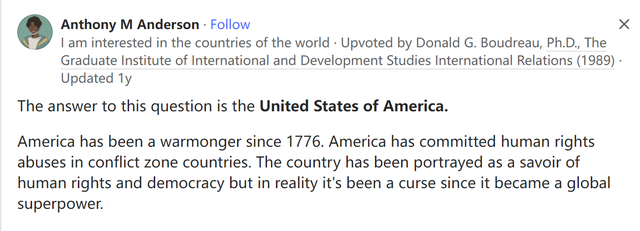




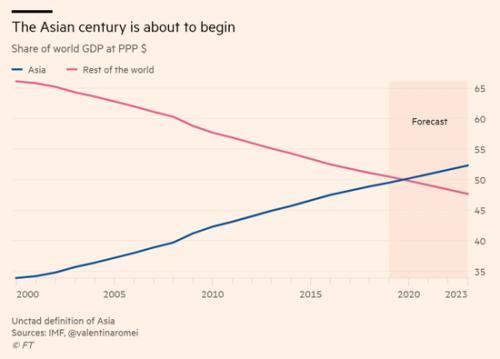




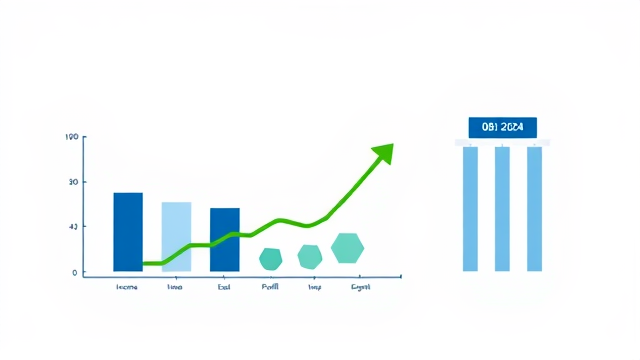
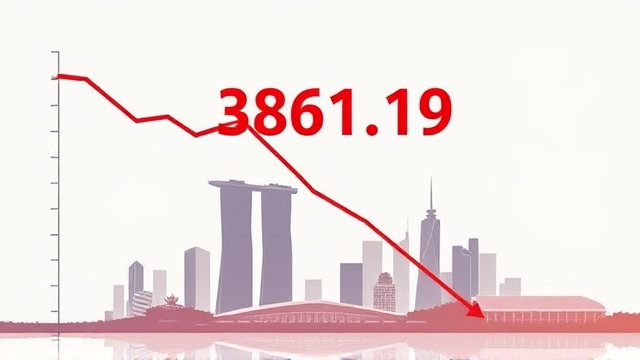




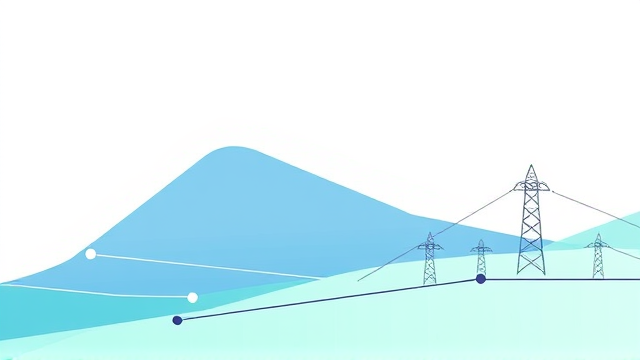
评论